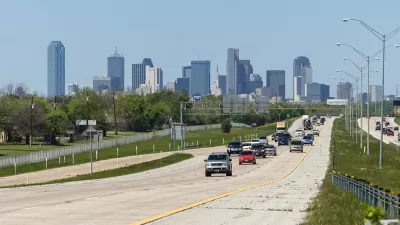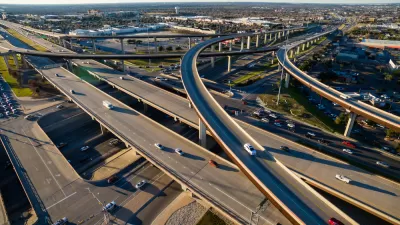If American politicans and bureaucrats had favored public transit or pedestrians as aggressively as they favored cars in the 20th century, public policy would be very different indeed.
After reading yet more blather about the "war on cars" or "density-pushing planners" I recently had a thought: what if government really did favor transit and compact development as aggressively as they had favored sprawl in the 20th century? How different would planning and transportation rules be?
For example, in the first half of the 20th century, government at all levels spent public money on roads for automobiles, while giving limited or no support to streetcars (which at first were private). As transit providers began to lose money, government took them over, and the federal government started to support public transit in the 1960s. Today, the federal government spends about four times as much on highways as on public transit. As a result of these policies, many cities have weak public transit systems, while many people and jobs have moved to suburbs served by highways.
So if government completely reversed course in the 21st century, it would reverse funding ratios: that is, spend half a century spending several times as much on public transit as on highways, and then spent another half century completely defunding highways (much as it ignored transit in the early and mid-20th century).
In the 1950s, government heavily subsidized suburbia, through Federal Housing Administration (FHA) lending criteria that favored suburbs. For example, FHA refused to subsidize mortgages in racially diverse urban neighborhoods, and favored new single-family homes (which tended to be in suburbs) over renovating existing homes- a policy that encouraged middle-class homeowners to move to suburbs. So to completely reverse course, the FHA would have to spend a couple of decades refusing to insure mortgages in any neighborhood built after the New Deal, while subsidizing mortgages in older neighborhoods.
These education and housing policies affected where we grow- that is, why people moved from cities to suburbs. But a somewhat different set of policies affect how we grow- that is, why suburban (and in some cities, urban) development is oriented almost exclusively towards cars.
Since the 1920s, most American zoning codes have mandated that huge swaths of land be limited to low-density residential use, ensuring that many Americans do not live within walking distance of public transit. To truly reverse this policy, government would have to spend the 21st century mandating that new development be at densities sufficient to support transit, and would require a mix of residential and commercial uses to the extent possible.
Since the 1950s, most zoning codes have also required that commercial landowners and multifamily dwellings provide visitors with parking lots and garages, thus effectively subsidizing driving by making parking more abundant. And because zoning codes also required buildings to be set back from the street, these parking lots were usually in front of buildings, thus ensuring that pedestrians must waste time walking through ugly parking lots in order to reach their destinations. To reverse this policy over the next 60 years, government would have to establish maximum parking requirements (as a few cities have in fact done) and require buildings to be in front of sidewalks so pedestrians could reach them more easily.
I do not favor all of the policies suggested above; some seem a bit too intrusive and paternalistic. However, these ideas are worth thinking about as an intellectual exercise - that is, to see how much change would have to occur for government to favor nondrivers as aggressively as it favored drivers in the 20th century.

Alabama: Trump Terminates Settlements for Black Communities Harmed By Raw Sewage
Trump deemed the landmark civil rights agreement “illegal DEI and environmental justice policy.”

Study: Maui’s Plan to Convert Vacation Rentals to Long-Term Housing Could Cause Nearly $1 Billion Economic Loss
The plan would reduce visitor accommodation by 25% resulting in 1,900 jobs lost.

Planetizen Federal Action Tracker
A weekly monitor of how Trump’s orders and actions are impacting planners and planning in America.

Wind Energy on the Rise Despite Federal Policy Reversal
The Trump administration is revoking federal support for renewable energy, but demand for new projects continues unabated.

Passengers Flock to Caltrain After Electrification
The new electric trains are running faster and more reliably, leading to strong ridership growth on the Bay Area rail system.

Texas Churches Rally Behind ‘Yes in God’s Back Yard’ Legislation
Religious leaders want the state to reduce zoning regulations to streamline leasing church-owned land to housing developers.
Urban Design for Planners 1: Software Tools
This six-course series explores essential urban design concepts using open source software and equips planners with the tools they need to participate fully in the urban design process.
Planning for Universal Design
Learn the tools for implementing Universal Design in planning regulations.
Caltrans
Smith Gee Studio
Institute for Housing and Urban Development Studies (IHS)
City of Grandview
Harvard GSD Executive Education
Toledo-Lucas County Plan Commissions
Salt Lake City
NYU Wagner Graduate School of Public Service





























